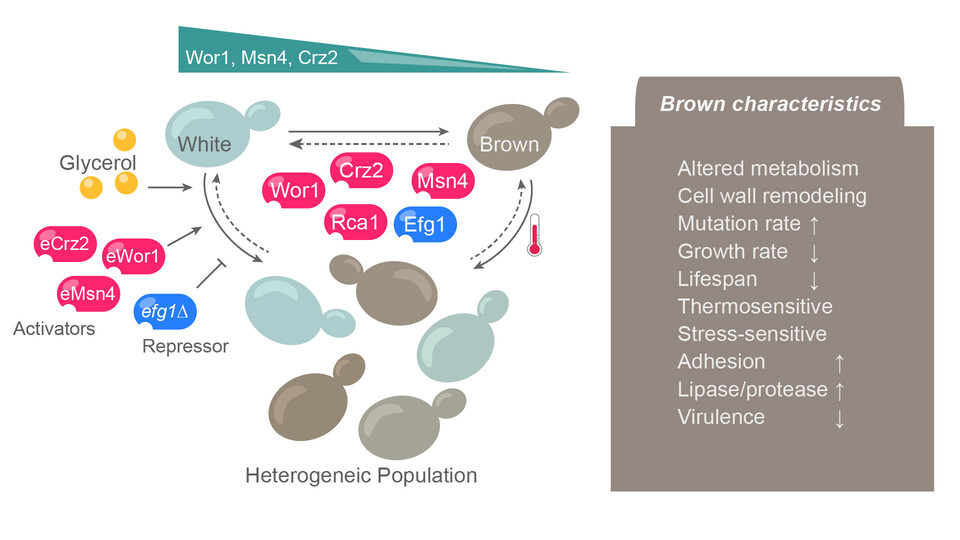
What began as a serendipitous lab observation evolved into a deep mechanistic investigation of Candida auris patient isolates. The team discovered that C. auris does not just switch between Brown and White phenotypes, but exists in multiple intermediate morphotypes, suggesting a highly dynamic and adaptable intra-species population. “Since the morphogenetic switch is reversible and heritable, we suspected both epigenetic and transcriptional control mechanisms”, first author Trinh Phan-Canh explains. “In other fungal systems, phase switching often requires transcription factor activity.” The team’s transcriptomic profiling and systematic phenotyping of more than 100 clinical patient isolates of C. auris revealed five candidate transcription factors that are critical for this morphogenetic adaptation.
The study uncovers how environmental or host factors such as carbon source and temperature can influence switching. For example, glycerol – commonly found in skin care and hospital disinfectants – and body-temperature can trigger these changes, connecting fungal pathogenicity with host environments. On a broader scale, the researchers suggest that global warming may drive evolution of fungal pathogenicity and antifungal resistance. The adaptability equips pathogens like C. auris to better cope with human body temperature and facilitates colonization of diverse ecological niches.
Since its initial identification in 2009, infection outbreaks of the skin-resident C. auris have been associated with high mortality and morbidity in healthcare settings. The WHO has declared C. auris as a high-priority threat to human health for the coming decade, demanding increased efforts in drug discovery. The widespread resistance to all classes of anti-fungal drugs poses serious treatment challenges. “If we were able to block factors driving the morphogenetic conversion”, Trinh notes, “we may be able to improve therapeutic efficacy and prevent multidrug resistance.” In this collaborative study, human skin samples were obtained from the Department of Dermatology at the Medical University of Vienna, while clinical C. auris strains were provided by the University of Delhi, India.
DOI: 10.1016/j.celrep.2025.115976